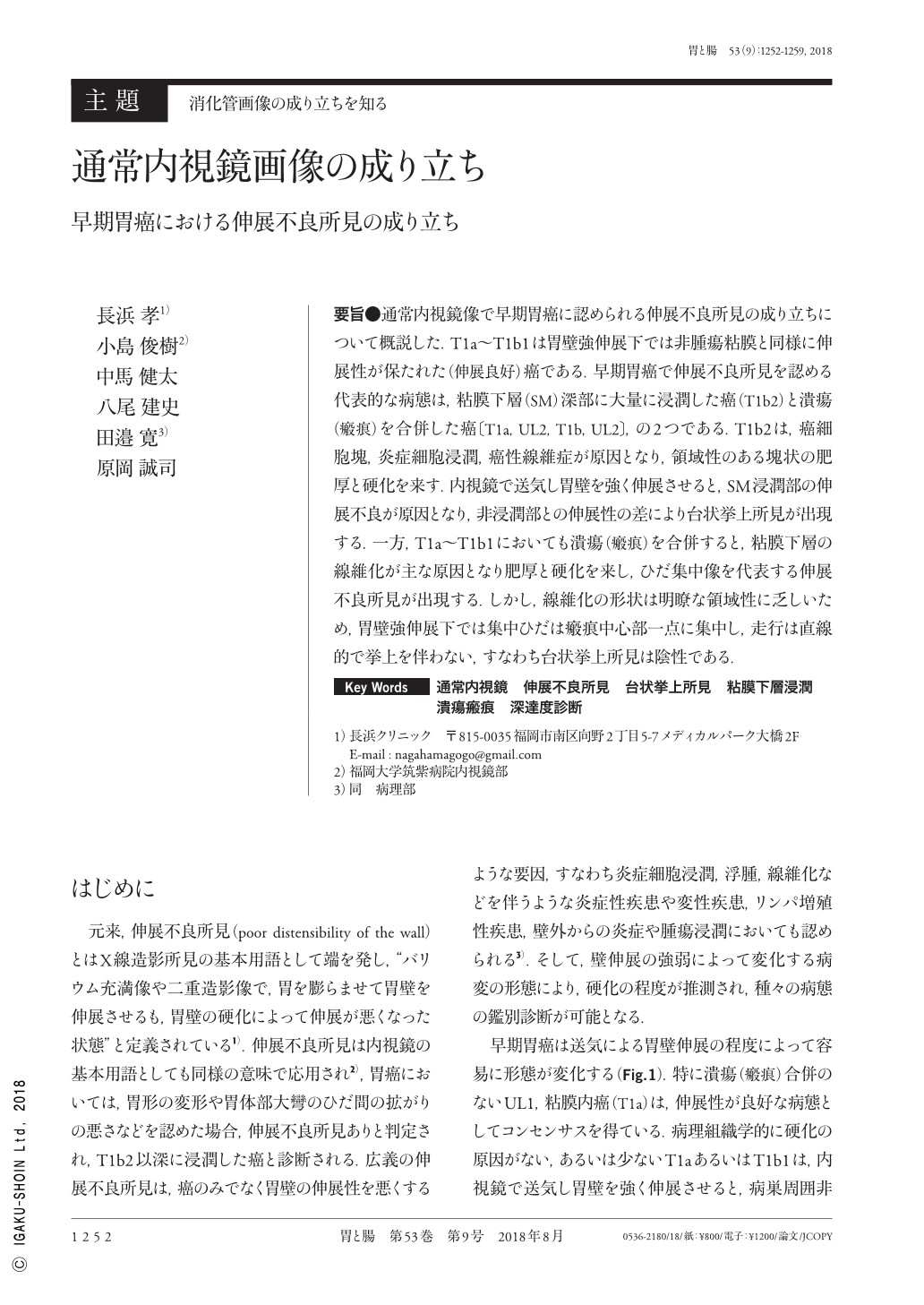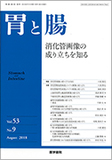Japanese
English
- 有料閲覧
- Abstract 文献概要
- 1ページ目 Look Inside
- 参考文献 Reference
- サイト内被引用 Cited by
要旨●通常内視鏡像で早期胃癌に認められる伸展不良所見の成り立ちについて概説した.T1a〜T1b1は胃壁強伸展下では非腫瘍粘膜と同様に伸展性が保たれた(伸展良好)癌である.早期胃癌で伸展不良所見を認める代表的な病態は,粘膜下層(SM)深部に大量に浸潤した癌(T1b2)と潰瘍(瘢痕)を合併した癌〔T1a,UL1,T1b,UL1〕,の2つである.T1b2は,癌細胞塊,炎症細胞浸潤,癌性線維症が原因となり,領域性のある塊状の肥厚と硬化を来す.内視鏡で送気し胃壁を強く伸展させると,SM浸潤部の伸展不良が原因となり,非浸潤部との伸展性の差により台状挙上所見が出現する.一方,T1a〜T1b1においても潰瘍(瘢痕)を合併すると,粘膜下層の線維化が主な原因となり肥厚と硬化を来し,ひだ集中像を代表する伸展不良所見が出現する.しかし,線維化の形状は明瞭な領域性に乏しいため,胃壁強伸展下では集中ひだは瘢痕中心部一点に集中し,走行は直線的で挙上を伴わない,すなわち台状挙上所見は陰性である.
This study outlines the poor extension findings typically observed in endoscopic imaging in patients with early gastric cancer. In cancer types T1a-T1b1, the wall flexibility is broadly maintained(i.e., it exhibits favorable extension)similar to the nontumorous mucosa during robust gastric wall extension. Typical pathological conditions that exhibit poor extension findings in patients with early gastric cancer are observed in two cancer types [T1a, UL2 and T1b, UL2] with substantial invasive carcinoma(T1b2)infiltrating into the submucosa(SM)and ulceration(scarring). In T1b2, cancer cell mass, inflammatory cell infiltration, and neoplastic fibrosis cause massive localized thickening and hardening. When air is blown through an endoscope to extensively extend the stomach wall, well-demarcated and elevated signs appear because of differing extensibility between the noninfiltrated part and SM infiltrated part. Furthermore, in T1a-T1b1, the coexistence of ulceration is primarily due to SM layer fibrosis, resulting in thickening and hardening and the appearance of poor extension, which are typical findings of mucosal fold convergence. However, as the fibrosis displays poor demarcation during robust gastric wall extension, the mucosal fold linearly convergences at a single point without elevation, signifying a negative well-demarcated elevation.

Copyright © 2018, Igaku-Shoin Ltd. All rights reserved.


